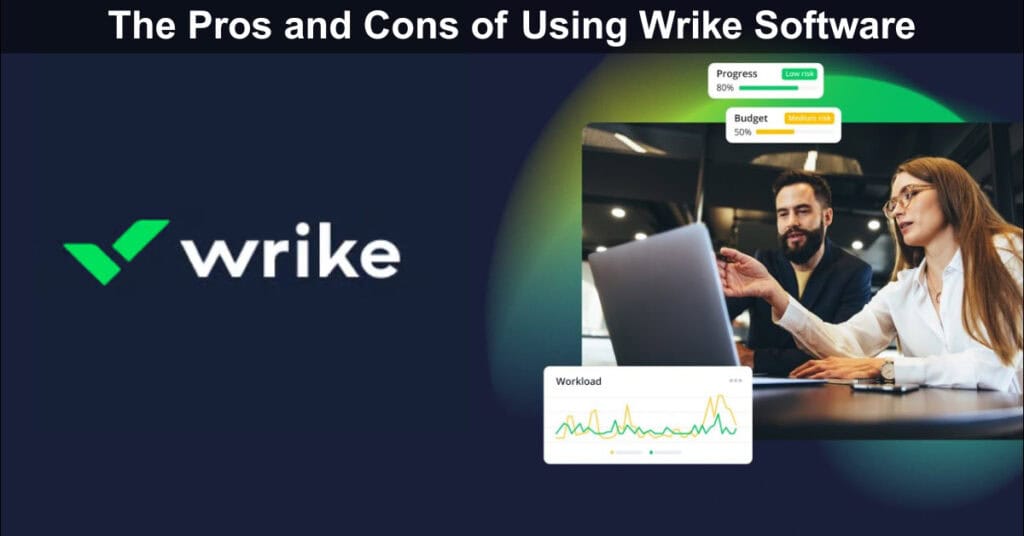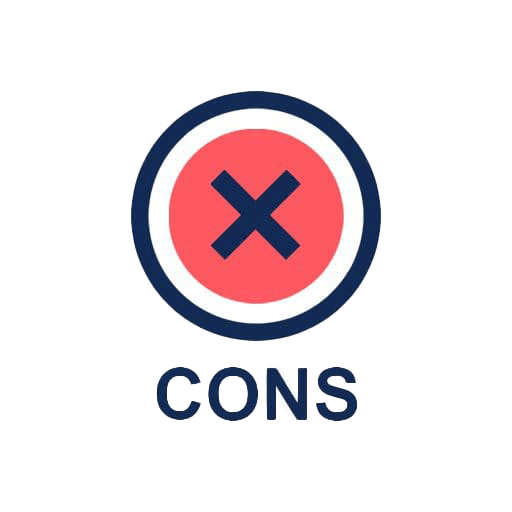
Teams today face increasing pressure to deliver faster, collaborate better, and maintain visibility across complex projects. Wrike is designed to eliminate those pain points by combining project management, automation, and analytics in one powerful platform. Used by over 20,000 organizations worldwide — including Siemens, Lyft, and Walmart — Wrike helps teams plan, track, and execute with clarity. With customizable dashboards, Gantt charts, Kanban boards, and 400+ integrations, it provides the flexibility to adapt to any workflow. Teams can collaborate in real time, automate repetitive work, and access actionable insights to make smarter decisions.
In this article, we’ll explore the key pros and cons of using Wrike software to help you decide if it’s the right fit for your business.
If Wrike’s pricing exceeds your budget, consider evaluating AceProject as an alternative. With its project-based pricing model rather than per-user fees, this platform may provide substantial cost efficiencies for your organization.
Wrike – Versatile Team Project Management Software
Wrike stands out as a versatile project management solution built to support teams of all sizes and industries — from marketing and IT to professional services and product development. Its powerful combination of planning, collaboration, and reporting tools helps organizations manage every phase of a project with precision. Whether you’re creating campaigns, tracking billable hours, or managing service requests, Wrike ensures alignment and accountability across departments.

At its core, Wrike offers dynamic Gantt charts, Kanban boards, and customizable dashboards that provide 360° visibility into project progress. Built-in automation simplifies approvals, while integrations with over 400 tools — including Slack, Google Workspace, Salesforce, and Adobe — keep workflows connected. For teams prioritizing security and control, Wrike delivers enterprise-grade protection with role-based access and encryption management. Designed for adaptability and scale, Wrike empowers teams to streamline processes, reduce bottlenecks, and achieve stronger results faster.
The Pros or Advantages of Wrike

Wrike stands out as one of the most robust and versatile project management tools available today. It’s designed to help teams manage complex projects, streamline collaboration, and maintain visibility across departments. The following are the most commonly highlighted strengths based on user reviews and industry evaluations.
- Powerful Project Visualization and Planning Tools: Wrike offers intuitive Gantt charts, Kanban boards, and customizable dashboards that make tracking project timelines and dependencies effortless. These tools enhance transparency across teams, allowing managers to spot delays early and adjust priorities for better execution.
- Extensive Integration Ecosystem: With over 400 native integrations, Wrike connects seamlessly with productivity tools like Slack, Salesforce, Google Workspace, and Adobe Creative Cloud. This wide ecosystem ensures that teams can manage communication, reporting, and creative assets from one central hub.
- Strong Collaboration and Communication Capabilities: Wrike simplifies teamwork through real-time task commenting, file sharing, and built-in proofing tools. Teams can collaborate on tasks without relying on external apps, reducing email clutter and enabling faster feedback cycles throughout all project phases.
- Advanced Customization and Workflow Automation: The software’s automation builder lets users create tailored workflows, triggers, and approval chains. This flexibility reduces repetitive administrative work and ensures consistent processes across projects, improving efficiency and accountability.
- Detailed Reporting and Analytics: Wrike Analyze provides in-depth visual reporting on project progress, resource usage, and financial metrics. Custom dashboards and widgets make it easy for managers to gain actionable insights and track KPIs for smarter business decisions.
- Enterprise-Grade Security and Reliability: Wrike maintains rigorous data protection standards with role-based access control, user authentication, and 99.9% uptime. Optional add-ons like Wrike Lock let organizations manage their own encryption keys, providing full ownership of their data security.
The Cons or Disadvantages of Wrike

While Wrike offers powerful capabilities for large teams, it can present difficulties for smaller organizations or those new to advanced project management platforms. Below are the most frequently mentioned drawbacks from verified users, highlighting where Wrike may fall short depending on team size, needs, and experience level.
- Steep Learning Curve and Feature Overload: Wrike’s flexibility comes with complexity and a steep learning curve. New users often find its interface overwhelming due to the abundance of menus, dashboards, and customization options. Without proper onboarding or training, setting up and maintaining projects efficiently can take longer than expected, impacting early productivity.
- Higher Cost for Full Functionality: Although Wrike offers scalable plans, many essential features like advanced reporting, time tracking, and integrations are locked behind higher-tier subscriptions. Smaller teams or startups may find these costs restrictive, especially if they need enterprise-grade tools to maintain workflow continuity.
- Performance Issues with Large Projects: Some users report slower loading speeds when managing high volumes of tasks or switching between large dashboards. This performance lag becomes noticeable in complex, multi-department environments and can reduce efficiency for teams handling several large client or internal projects simultaneously.
- Notification and Interface Clutter: The system’s detailed structure can easily become overwhelming. Excess notifications, combined with multiple workspaces and folders, can lead to cluttered dashboards. Without careful configuration, teams risk missing critical updates or wasting time sorting through unnecessary information.
- Integration and Automation Gaps for Some Users: While Wrike connects with over 400 applications, some users find the automation builder less intuitive compared to competitors. Triggers, data syncing, and conditional rules occasionally lack flexibility, which may limit fully customized workflow creation or multi-tool automation setups.
- Mobile and Offline Functionality Limitations: Wrike’s mobile app provides convenient task updates and notifications, but lacks the desktop version’s depth. Offline functionality remains limited, making it less suitable for field workers or remote teams that frequently operate without reliable internet connections.
Wrike Key Features
Wrike’s intelligent work management platform delivers flexibility and power across every stage of project execution. From planning and collaboration to analysis and security, its extensive capabilities allow teams to manage complex workflows efficiently, automate manual tasks, and scale productivity across any department or business function. Here are Wrike’s main features:
- Ideate & Align: Wrike simplifies early-stage collaboration by consolidating ideas, requests, and tasks into a single space. Teams can visualize concepts, assign priorities, and use GenAI-powered tools for brainstorming, ensuring everyone stays aligned before moving into execution and planning stages.
- Plan & Resource: Wrike offers intuitive tools for scheduling, resource booking, and effort management. Users can switch between Gantt, Table, Board, and Calendar views to plan workloads efficiently. Visibility into availability and user skills ensures teams allocate resources effectively and prevent bottlenecks.
- Execute: The platform streamlines project execution through task automation, document management, and built-in approvals. Teams can collaborate internally or with external requesters, edit shared documents live, and centralize revisions in one place — eliminating the need for endless email exchanges and version confusion.
- Report & Analyze: Wrike’s analytics engine transforms data into clear insights on project performance, resource utilization, and outcomes. Teams can track deliverables, generate visual reports, and showcase impact, enabling data-driven decisions and transparency across campaigns, product launches, or ongoing business initiatives.
- Learn & Adapt: Wrike supports both Agile and Waterfall methodologies, allowing teams to adjust strategies as priorities shift. Its adaptable workflows ensure smooth transitions between project phases and make it easy to test, refine, and optimize processes for continuous improvement.
- Integrate: With over 400 native integrations and an open API, Wrike unifies your digital workspace. Connect tools like Slack, Google Workspace, Adobe Creative Cloud, and Salesforce to reduce context-switching and create a single source of truth across your entire ecosystem.
- Safeguard: Wrike ensures enterprise-grade security with SSO, two-factor authentication, and user group permissions. Its configurable access controls allow administrators to tailor visibility and permissions, protecting sensitive data while maintaining compliance and peace of mind across distributed teams.
Wrike Use Cases
Wrike provides adaptive work management solutions for virtually every industry and department. From creative agencies and IT teams to finance, manufacturing, and professional services, Wrike’s intelligent platform scales to meet unique operational needs. Its customizable workflows, robust integrations, and AI-powered automation make it a versatile solution for modern businesses.
- Creative and Marketing Agencies: As a powerful piece of creative project management software, Wrike is used by creative teams and agencies to standardize creative work requests, collaborate with clients, automate proofing, and streamline the work approval process. These tools help shorten approval cycles, deliver campaigns faster, and ensure consistent brand quality.
- Professional Services and Consulting: Wrike simplifies resource management, project scheduling, and client collaboration. Consulting firms can monitor billable hours, optimize workloads, and share project updates with clients in real time. This results in improved delivery accuracy, higher client satisfaction, and better profitability across multiple engagements.
- IT and Product Development Teams: Wrike’s Agile tools support sprint planning, backlog management, and risk tracking. Teams can monitor project health using dashboards, automate workflows, and integrate with Jira or GitHub. The platform enables efficient iteration, faster releases, and transparent communication across distributed technical teams.
- Financial and Legal Services: Wrike helps financial and legal teams manage complex projects securely. Features like access controls, SSO, and Wrike Lock protect sensitive client data, while automated workflows improve compliance, case tracking, and financial reporting — reducing manual errors and increasing operational efficiency.
- Remote and Hybrid Teams: With Wrike’s collaboration and communication tools, distributed teams can stay aligned across time zones. Shared dashboards, built-in video integrations, and task tracking enable full visibility and accountability, ensuring seamless teamwork even when working from different locations.
- Manufacturing and Engineering: Wrike’s structured workflows and resource planning tools streamline production schedules and improve cross-departmental coordination. Teams gain real-time insight into capacity and progress, which helps reduce downtime, eliminate bottlenecks, and ensure that deliverables meet quality standards and deadlines.
- Startups and Small Businesses: For growing teams, Wrike offers scalable solutions that simplify task management and project tracking. Customizable dashboards and templates help startups build repeatable processes, stay organized, and accelerate their growth trajectory without sacrificing visibility or control.
Wrike Pricing and Costs
For growing teams that need structure without limits, Wrike’s plans provide scalable solutions to manage tasks, automate workflows, and deliver impactful results. Whether you’re a freelancer, creative agency, or enterprise, Wrike enables seamless collaboration and complete visibility across every stage of work — all backed by intelligent automation and enterprise-level security. Amounts shown are billed annually per user.
- Free Plan ($0 per user/month): Ideal for individuals or small teams starting with structured project management. It offers basic task and project tracking through web, desktop, and mobile apps, along with Board and Table views, and AI Essentials. It’s a great way to explore Wrike’s workflow flexibility at no cost.
- Team Plan ($10 per user/month): Designed for small teams seeking collaboration and automation. It includes folders, nested projects, unlimited tasks, Gantt charts, dashboards, 50 automation actions, and 2 GB of storage per user — ideal for managing everyday work efficiently and streamlining team performance.
- Business Plan ($25 per user/month): Suited for medium to large organizations, it offers advanced tools like project blueprints, approvals, proofing, custom item types, and 200 automation actions per user, plus integrations with Adobe Creative Cloud and real-time reporting for enhanced visibility and performance tracking.
- Enterprise Plan (custom pricing): Created for large teams needing heightened security and scalability. It includes all Business features plus SAML-based SSO, two-factor authentication, user audit reports, admin permissions, and 1,000 monthly automation actions. With 10 GB storage per user, it ensures secure, enterprise-grade operations.
- Pinnacle Plan (custom pricing): Built for organizations with complex workflows and advanced analytics needs. It includes Locked Spaces, advanced BI reporting, team utilization dashboards, budgeting tools, Wrike Datahub, and QuickBooks and Power BI integrations for data-driven insights and precise project oversight.
If you’d like a deeper understanding of Wrike’s pricing structure, features, and value across each plan, we’ve created a detailed guide. Check out our comprehensive article on Wrike Pricing and Costs to see which plan delivers the best ROI for your team’s needs.
Conclusion
Wrike stands out as one of the most powerful and flexible project management platforms available today. Its ability to streamline collaboration, automate workflows, and integrate seamlessly across departments makes it an invaluable tool for organizations of all sizes. From creative agencies and IT teams to enterprise-level operations, Wrike adapts to diverse needs with intelligent features and enterprise-grade security.
While its advanced capabilities can feel overwhelming at first, the benefits far outweigh the learning curve. If you’re looking for a scalable solution that empowers teams to work smarter, faster, and with greater transparency, Wrike is a top contender worth exploring.
Suggested articles:
- The Pros and Cons of Using Nutcache Software
- The Pros and Cons of Using Redbooth Software
- The Pros and Cons of Using Paymo Software
Daniel Raymond, a project manager with over 20 years of experience, is the former CEO of a successful software company called Websystems. With a strong background in managing complex projects, he applied his expertise to develop AceProject.com and Bridge24.com, innovative project management tools designed to streamline processes and improve productivity. Throughout his career, Daniel has consistently demonstrated a commitment to excellence and a passion for empowering teams to achieve their goals.